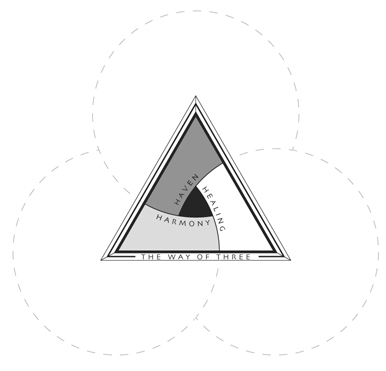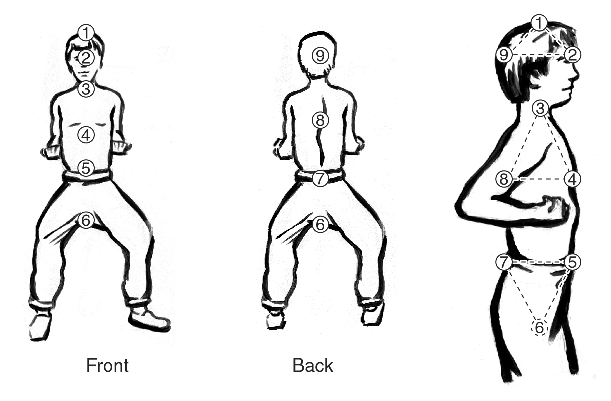
Three types of mental exercises that can help maintain a centered mind are:
It is of foremost importance to understand that all three of these mental exercise techniques are interrelated. Elements of all three will exist in each individually. But by identifying each individual technique, we can explain its primary focus.
Sometimes the resources of our conscious mind are unable to help us find solutions to questions or problems that we may have. The resources of the conscious mind may have reached their limit. It is the subconscious mind that can supply the necessary resources.
But, although being in touch with our subconscious mind gives us access to its vast resources, we usually do not pay much attention to it. Most of our learning and problem solving has come from conscious thinking. This can limit access to our subconscious.
Mantra (repeated sound) Exercise, using internal or external auditory cues, leads us to use our subconscious mind and allows us to contemplate, daydream, find answers, address problems, discover self-knowledge, and more. This trance like state helps to center the mind and stimulate circulatory systems of the body.
Three types of Mantra Exercise are:
Mantra Exercise is recommended as the daily mental exercise method.

Physical Imbalance Breathing can give us control and energy to overcome physical imbalance which can be caused by the forces and influences of any of the following:
For instance, gravity, which is a law of nature, constantly exerts force on our bodies. If we do not fortify against gravity, it can cause imbalance with our spine, organs and other areas of the body. Aging is a law of impermanence. The effects of aging can cause health imbalance. And, following the rules of our society, which are laws of culture, may sometimes be stressful. Physical imbalances can be cared for or prevented through Disciplined Breathing.
Mental and Psychic Imbalance - Negative emotions like anger, jealousy, fear, greed, arrogance and others can arouse unpleasant and harmful thoughts. These negative emotions and thoughts can lead to unhealthy verbal, physical and psychic behavior. Negative emotions can drain the energy from us without us even knowing of their existence. Disciplined breathing can help us defend against negative emotions and restore our inner balance.
Three of the most common types of breathing are:
In this section we are concerned with Disciplined Breathing.
Each part of the body has an assigned function, e.g., different parts of brain, different internal organs, limbs, joints, fingers, etc. Correct breathing can direct the flow of internal energy to these areas and promote their health. Disciplined Breathing stimulates circulation of body systems and health of energy centers.
Some of the functions of Disciplined Breathing are:
There are nine energy centers in the body. These nine energy centers form upper, middle and lower triangular energy zones.

| Legend |
| 1. Brain - Corpus Callosum |
| 2. Brain - Frontal Lobe |
| 3. Breathing / Swallowing |
| 4. Solar Plexus |
| 5. Hara - Digestive/Reproductive |
| 6. Waste Removal |
| 7. Lumbar Vertebrae |
| 8. Heart / Thoracic Vertebrae |
| 9. Brain - Occipital Lobe |
In Disciplined Breathing, the mind and breath focus on these different centers and zones to promote uninterrupted energy flow through them. There are many other energy centered breathing techniques.
Three primary goals of Disciplined Breathing are:
Disciplined Breathing is recommended as a more advanced method of maintaining physical and mental health.
Mental distress can be caused by not being truthfully, by taking things personally, by making assumptions, and simply by not trying one's best. Sometimes feelings and behaviors learned in the past fail to be useful in the present. They may even prevent the reaching of a desired goal. The subconscious mind can help access positive and useful feelings and behaviors learned in the past.
Guided Imagery is a type of assisted meditation that requires the guidance of a trained facilitator to realize its many benefits. These experts are usually schooled in the psychological study called Nero Linguistic Programming.
In Guided Imagery, already possessed feelings and attitudes can be utilized to program desired behavior. The most common benefits of Guided Imagery are:
Many of the feelings and behaviors we wish to possess already exist within us. It is a matter of identifying them and bringing them to the surface when we need them. We have all probably felt confident, focused, calm, and centered at some point in our lives. Also, there have probably been many times in our lives when we did not.
Guided Imagery, using primarily visual cues, opens up the subconscious, making one more receptive to metaphor and embedded messages. At this level, a facilitator can guide us to desired resources and tie these resources to a given visual, auditory or kinesthetic cue or anchor. Triggering the chosen anchor, one can then experience the desired resource state.
It is like being a movie director in one's own mind. A person can create and utilize positive scenes and neutralize and delete negative scenes. The feelings and behaviors from the positive scenes can be replayed at will by giving oneself the proper cue.
Guided Imagery is recommended to deal with specific issues of mental imbalance.
